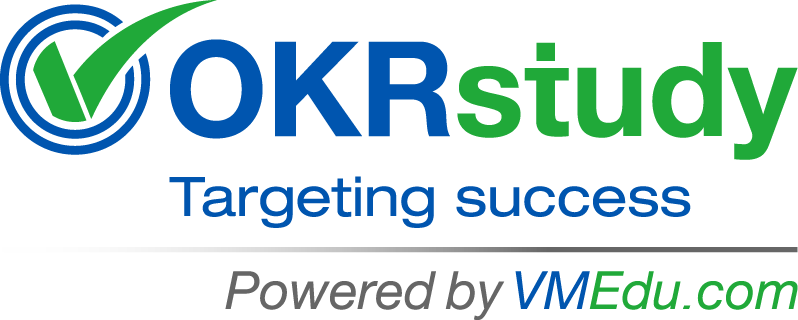| Consider the following factors when selecting your OKR knowledge resources | What the OKRBOK™ (OKR Body of Knowledge) Guide offers | Common Limitations of Other OKR Books/Guides |
|---|---|---|
| Comprehensive and Well-Defined | The OKRBOK™ Guide provides a structured and comprehensive framework for implementing OKRs, outlining key principles, defined roles, essential artifacts, standardized processes, and performance-tracking reports to ensure effective goal-setting, alignment, and measurable outcomes across organizations. | Other OKR guides lack a formalized framework, often relying on storytelling rather than structured methodologies. |
| Available in six languages: English, Spanish, Portuguese, German, Italian, and French. | The OKRBOK™ Guide is available in English, Spanish, Portuguese, German, Italian, and French. It is offered for free on the OKRstudy™ website. | Other OKR accreditation bodies offer limited or no multilingual support, often requiring professionals to rely solely on English resources, which restricts accessibility for non-English speakers. |
| Practical Implementation in Real-Life Scenarios |
The OKRBOK™ Guide includes real-world case studies and industry-specific examples that illustrate the practical application of OKRs across various sectors. Additionally, the guide provides insights into OKR adoption within organizations, featuring screenshots and references from 15 popular OKR tools to enhance real-world understanding. |
Other OKR resources primarily focus on theoretical discussions or personal experiences, lacking a structured, step-by-step approach for real-world implementation. As a result, professionals often struggle to apply OKRs effectively in practical business settings. |
| Integration with Other Popular Agile Frameworks |
The OKRBOK™ Guide includes a detailed appendix on effectively scaling OKRs across an entire organization. It also explains best practices for cross-team collaboration, enabling OKR integration with Agile frameworks like Scrum, Kanban, DevOps, and Lean. |
Other OKR books focus on high-performance cultures but provide limited guidance on integrating OKRs with Agile methodologies like Scrum, Kanban, DevOps, and Lean, making them less effective for teams that rely on iterative and adaptive work processes. |
| Recommendations on AI for increasing productivity | The OKRBOK™ Guide provides specific recommendations on leveraging Artificial Intelligence (AI) to enhance goal execution, strategic alignment, and performance tracking. It also highlights how AI can improve OKR execution, real-time tracking, and data-driven decision-making, ensuring organizations achieve measurable results efficiently. | Other OKR guides primarily focus on traditional goal-setting principles without dedicated insights into AI integration. They often lack guidance on leveraging AI to enhance OKR execution, real-time tracking, and data-driven decision-making. |
| Target Audience | The OKRBOK™ Guide is designed for Professionals, teams, executives, and organizations seeking a systematic OKR implementation approach. It also serves as a comprehensive reference, regardless of the reader's prior experience with OKRs. | Other books target a specific audience. Additionally, they do not emphasize the collaboration necessary among various OKR roles, which is essential for effective implementation. |
| Perspective of the Author(s) | The OKRBOK™ Guide is developed by OKRStudy™, a brand of VMEdu, Inc., focusing on a standardized OKR framework. The guide is based on insights from thousands of OKR implementations across industries, with significant input from the global OKR community and the VMEdu® Global Authorized Training Partner Network, which includes over 2,000 companies in more than 50 countries. Its development was a collaborative effort involving experts and practitioners from diverse fields. | Other OKR books are often written by a single author or a small group and are typically based on limited personal experiences within a specific industry. |
| Theoretical vs. Practical Application | The OKRBOK™ Guide balances theoretical foundations with practical applications, including templates, real-world examples and step-by-step implementation strategies. It ensures organizations can effectively align, track, and optimize their OKRs to drive measurable outcomes | Other OKR resources are primarily theoretical, focusing only on ideal scenarios without considering real-world challenges. They often fail to address the complexities and practical constraints that organizations face when implementing OKRs. |
| Prescriptive vs. Nonprescriptive |
The OKRBOK™ Guide offers best practices with defined processes and templates but remains flexible, allowing organizations to adapt OKRs to their specific needs |
Other OKR resources are overly rigid, making it difficult to adapt OKRs to different organizational needs. They often lack concrete guidance on real-world implementation, leaving professionals without clear direction on how to apply OKRs effectively. |
| Free Trial & Accessibility | The OKRBOK™ Guide is available as a free online resource on the OKRstudy™ website. A free introductory course and certification, OKR Fundamentals with AI Certified (OKRFC), is also available, allowing professionals to explore the framework before committing. | Most OKR books do provide free previews or trial materials, but the preview is not comprehensive and makes it difficult for professionals to assess their relevance before purchasing. Additionally, they often focus on traditional or outdated OKR concepts and fail to address the evolving dynamics of modern workplaces. |
